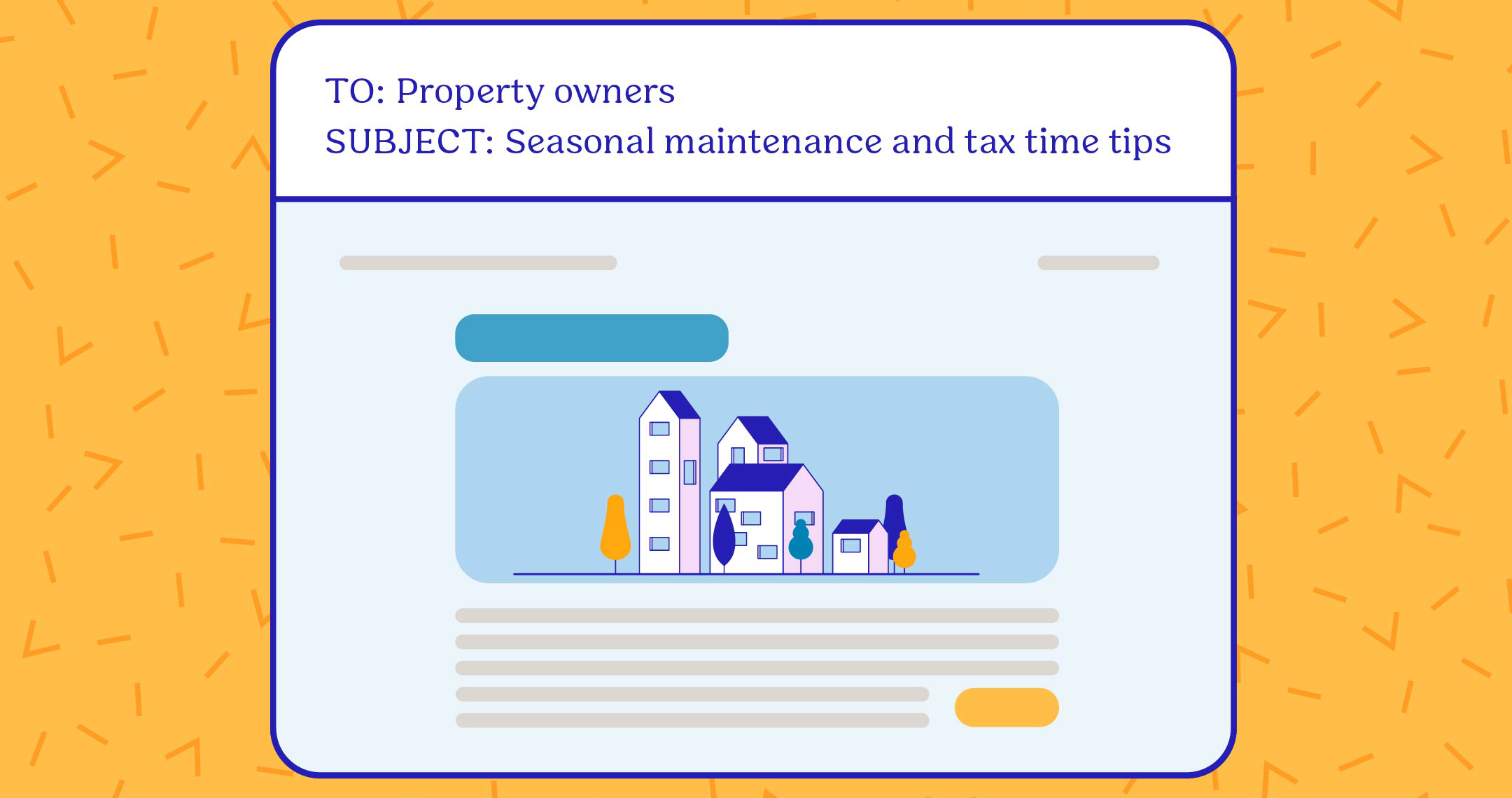Using Mailchimp for property management | Kolmeo

At Kolmeo, we firmly believe in the concept of working smarter, not harder. The tech in our lives should help us not overwhelm and wherever we can, we strive for simplicity and effectiveness in our tech stack.
There is an ever-growing stream of new tech coming out every other week, but what are the real, simple and most efficient applications that you should be using right now? Whether you're at a buyer's advocacy firm or in traditional property management, one of the main tools you should include in your tech stack is for email communications and marketing.
Mailchimp for your email marketing
Mailchimp is one of the best tools for handling everything email marketing related. Whether you love them or not, emails are still one of the most widespread and effective means of communication for your property owners, tenants, suppliers and new business enquiries.
You can use it to create stunning email communications and newsletters without the need for a graphic designer or web developer. It has a well-designed interface that is easy to use and there are a range of templates for you to use as a property manager or property management business. And you can also set some basic automation rules to have emails sent based on certain triggers.
Ideas for your email content
In order to get the best value out of Mailchimp and take full advantage of its capabilities, the most important step is to understand your business goals so that any email marketing efforts underpin your success in achieving these goals. As a property management business, is your end goal with Mailchimp to grow your customers? Or is it to reduce your overall vacancy metrics so that your rent roll has fewer properties vacant at any given time? These are the sorts of questions you should be asking before you decide to start a new marketing campaign.
If your goal is to grow your rent roll over time through a referral program with owners, you could share relevant content with them to help them promote your business. Email content like this could include case studies, key business metrics such as vacancy rates or the results of any satisfaction surveys, as well as testimonials of your services. If you're conducting new research into an area they might be interested in, this is the type of content owners may share with their network.
Other subjects you could write about if you’re sharing a weekly newsletter with property owners are investment tips, reminders around property maintenance and seasonal tips at tax time.
When sharing information with tenants, you could plan an entirely different campaign to support the same business objectives. If you're business goals are to reduce vacancy rates, you could send a weekly newsletter to rental applicants who haven’t successfully picked up a property with you, and update them with available properties to suit their criteria.
Setting up your account
For an entry level Mailchimp account, you can create up to five audiences and use separate tags within that audience to send out separate campaigns. As an example for a real estate account, you could create one list for your property owners, another for tenants and another for suppliers.
Within the property owners list, you could tag some owners as single property owners and others as multi-property owners. You could then add additional tags so that some owners were for a specific geographic region as well as their interests and desires for the property such as “interested in buying a new property” or “likely to sell soon”.
For tenants, you could tag those which are currently in one of your properties and others as prospective tenants. You could even tag long-term tenants if you plan on sending out specific emails to this group.
Privacy requirements to adhere to
Don’t forget to adhere to privacy requirements when setting up your campaigns and adding people to your audience. There are various privacy rights and responsibilities that you should be across. It’s important to get consent from recipients before you add them to any distribution list. That includes both your property owners and tenants as well as any other types of audiences you would like to set up.
If tenants come to an open for inspection and apply for a property but then subsequently miss out, you can ask for their consent to adding them to a list where they can receive future properties that meet their needs at the time they miss out. Set up a digital form to capture their consent while they're at the inspection.
Mailchimp is great because it automatically includes the required opt-out at the bottom of each email without you needing to set anything up. The footer at the bottom of every Mailchimp email always includes an unsubscribe button as well as information on how the person receiving the email got on the list. An example of this would be, “You’ve received this email as you applied for a Richmond rental property in January 2022”.
Email marketing metrics for your campaign
There’s a stack of wonderful reports available on Mailchimp too. Once you’ve sent your property management newsletter to owners or tenants, you can look at the insights of the campaign to find out what makes people click and better understand your audience.
Mailchimp even offers an industry comparison report so that you can compare your campaign metrics to other real estate agencies and property management professionals. This benchmarking report can help you understand whether your opens, clicks and unsubscribe rates are similar to or completely outperform your competitors.
After running your campaigns for a period of time, take the opportunity to review your email marketing efforts as a whole. Like any marketing campaign, you to use your time and efforts wisely. Focus on building connections that matter by using the right tools and the right means to communicate your services. Have an end goal in mind, reviewing your progress at a regular frequency and using the right platforms like Mailchimp will help you work towards these objectives this year.


